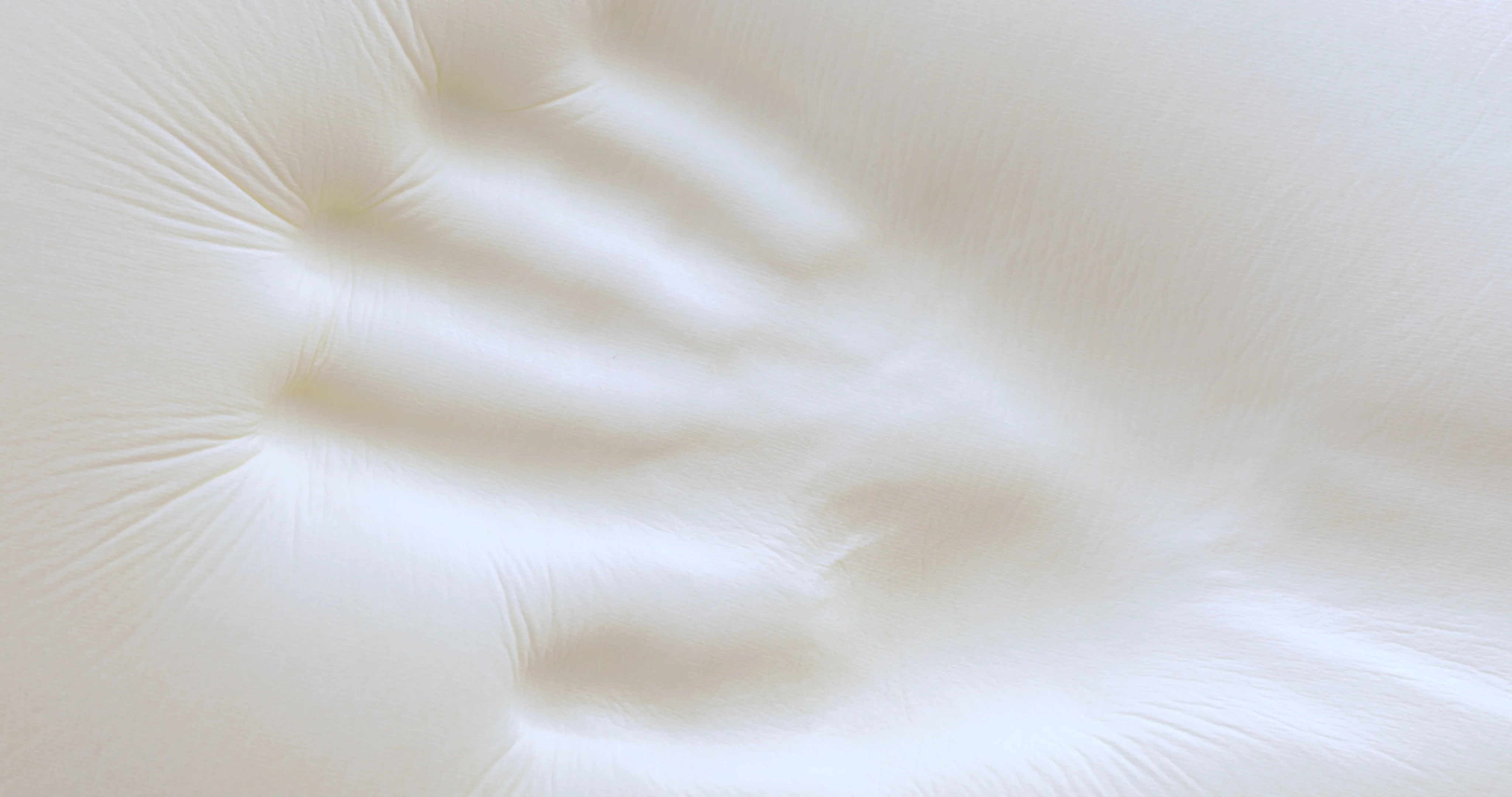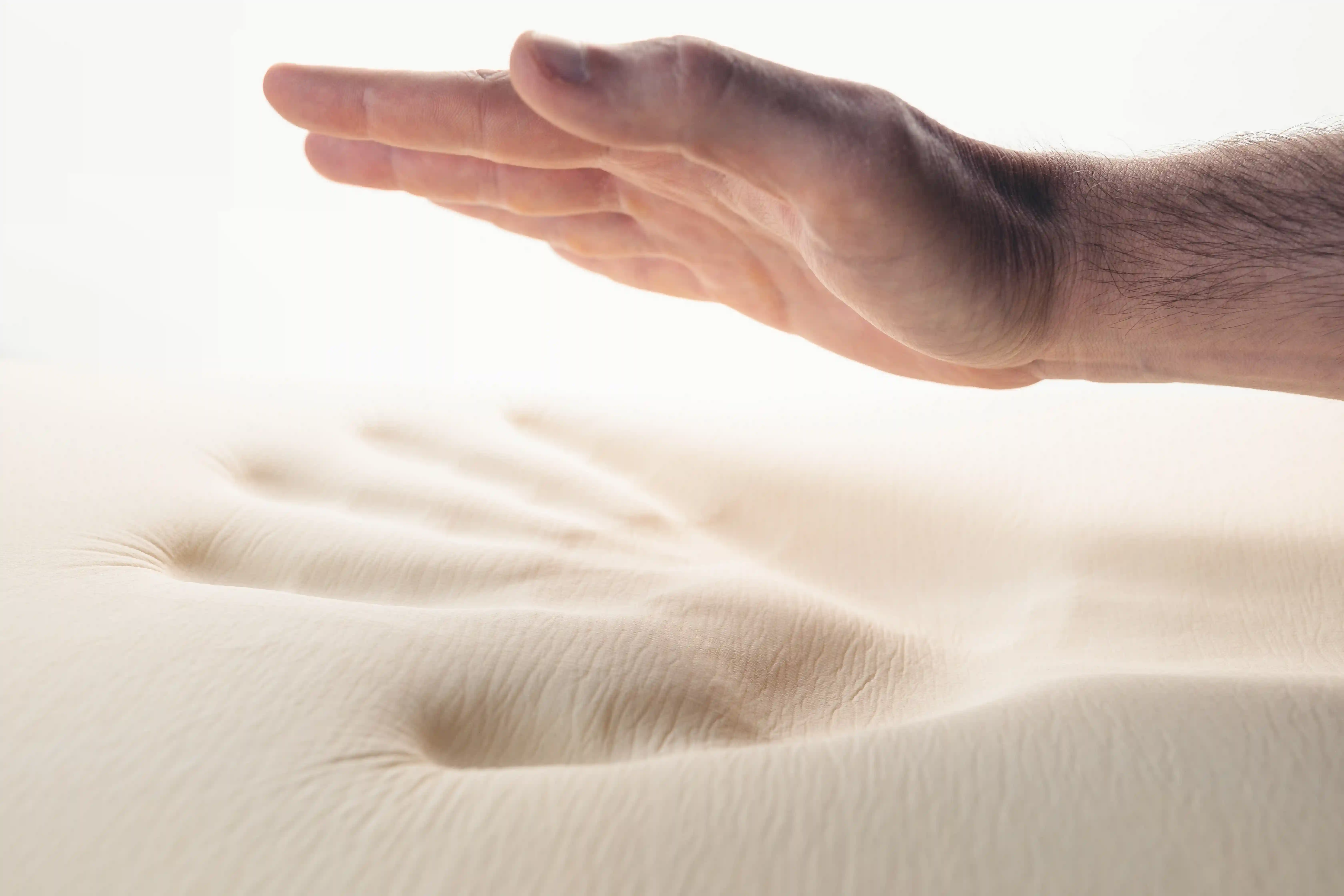First introduced in the 1990s, memory foam mattresses are one of the most popular types of mattresses on the market today. Some people will either tell you how much they love memory foam or hate it, but it all depends on their preferences.
In this article, we delve into the world of memory foam mattresses, exploring their construction, benefits, and why they make for a superior sleeping experience. At Sleepiverse, we are committed to providing you with the most detailed insights into memory foam mattresses to help you make an informed choice for a better night's sleep.
What Is Memory Foam?
Memory foam, also known as viscoelastic foam, is a revolutionary material initially developed by NASA for use in astronaut seating. Today, it is a key component of modern mattresses, thanks to its unique properties that offer exceptional comfort and support.
The Science Behind Memory Foam
Memory foam is mainly composed of polyurethane, a very versatile polymer that is used in several everyday items and products such as furniture, adhesives, appliances, and more. It is a soft and flexible material that is typically used in mattress manufacturing because it is dense enough to help support your body.
Memory foam is also known as “viscoelastic” polyurethane foam, and it consists of two characteristics: viscosity and elasticity. Firstly, viscosity in mattresses refers to the material moving slowly once pressure is applied to it, an example of this is honey. Secondly, memory foam is elastic, as it can stretch and form shapes and then return to its original form.
Additionally, memory foam consists of several other chemicals, but each company or manufacturer has its own chemical composition to make memory foam mattresses. Each manufacturer uses different components and procedures to create the desired features in the mattress.
How Does Memory Foam Work?
Memory foam mattresses are made to gradually conform to your body’s size and shape in reaction to pressure, equally distributing your body weight. This is achieved as memory foam uses your body temperature to soften and mold to your contours, providing support and comfort.
Also, they are designed to bounce back, meaning that once pressure is removed, the foam will bounce back pretty slowly to its original form. However, as time goes by and the more you use the mattress, it will remember your body shape, which is why it’s called memory.
Depending on how much pressure or force you apply to the mattress, it reacts differently. If you apply rapid pressure, it tends to cause the foam to change shape more slowly. This indicates that memory foam is quite good at absorbing the force of an impact, which is why it was first utilized in fields like the construction of space shuttles.
In the case of mattresses, memory foam helps the mattress support your body equally and slowly creates this contouring effect as it gradually adjusts to your body’s impact and adapts to your shape.
Different Types of Memory Foam Mattresses
Traditional Memory Foam
This type of memory foam was the first to appear on the market for commercial use in the 1970s. The traditional memory foam is known for its contouring properties and pressure relief. It is an excellent choice for those seeking a plush, cradling feel.
However, the common issue with this type of memory foam is that it’s very likely to absorb and store heat. Meaning that, if you’re sleeping or laying on the mattress for a while, you can get uncomfortably warm. The good news is that other types of memory foam help address this problem.
Open-Cell Memory Foam
This type of mattress has the same components as traditional memory foam, but it has a different internal structure, which is that it comes with “open cells”. Those “open cells” are designed to help increase ventilation and airflow, which helps the mattress get rid of heat.
However, the problem with this type is that it is far less dense in comparison to other types of mattresses. This is an issue because density can impact the firmness of the bed, making it feel less supportive of the body's weight.
However, new approaches in the manufacturing processes have been found thanks to technological advancements that can help solve this issue while maintaining the open-celled internal structure of the mattress.
Gel-Infused Memory Foam
This type of memory foam combines the structure of traditional memory foam and open-cell memory foam. It includes the addition of gel by pumping gel-based microbeads into the foam, which helps create pockets from the inside. This creates a similar structure to open-cell memory foam but with a cooler effect.
However, the gel memory foam includes “phase-changing” materials, which continuously absorb and disperse healing from your body. This type of memory foam helps the mattress become cooler and more breathable than the other two types.
Memory Foam Mattress Construction
There are different layers in memory foam mattresses, and they are used in the making of mattresses for more support and comfort.
The first layer is referred to as the comfort layer, which is the top part of the mattress that consists of one or several foam layers and is designed to give you more comfort and contouring effects. This layer can be between 1 and 4 inches thick, depending on the firmness of your mattress. For example, the comfort layer could be 4 inches thick if your mattress is soft or medium.
The second layer is the transition layer, which is a part that also consists of one or several layers of foam and is designed to be a barrier between the comfort and core layers to create a bouncy effect. Some manufacturers include latex in this layer to increase durability and responsiveness, and others can use mini-coils in this layer for extra support.
The third layer is commonly referred to as the support core of the mattress, which is the thickest and largest layer and provides stability and support to your body. This layer can range between 6 and 10 inches thick, and it’s made to be this thick to stabilize the entire mattress.
Why Choose Memory Foam?
- Pressure Relief: Memory foam mattresses can give you relief in the hips, shoulders, and neck, which experience the most pressure when you’re asleep. This is because memory foam conforms to your body’s shape with the help of your body heat and the pressure you apply to it. If you suffer from joint problems or arthritis, you will experience less pain and discomfort as memory foam distributes weight evenly and relieves pressure on typical pressure points.
- Spinal Alignment: The contouring abilities of memory foam can benefit many sleepers by promoting proper spinal alignment. You can find sleep positions that help keep your spine properly aligned simply because memory foam conforms to your body’s natural curves. By doing so, you can avoid morning aches and back pain, as well as tossing and turning at night.
- Allergy Friendly: A very fascinating advantage of memory foam mattresses is that they are less likely to draw in and accumulate the buildup of common allergens thanks to their dense structure. If you suffer from allergies, you won’t have to worry about dust mites, mildew, or any other irritants anywhere near this mattress.
- Motion Isolation: Memory foam mattresses can eliminate motion transfer because of their density and how they react to pressure. If you’re a light sleeper or your partner moves around too much in their sleep, this type of mattress can keep motion on one side of the bed from being felt on the other.
- Silent: Memory foam mattresses are commonly known for being quiet, this sounds suitable for couples or anyone who doesn’t want to be disturbed by squeaking noises.
Why Avoid Memory Foam?
- Overheating: One of the most common complaints associated with memory foam is heat retention. The density of memory foam can trap body heat, causing some sleepers to feel uncomfortably warm during the night. This issue is especially relevant for individuals who tend to sleep hot.
- Cost: Memory foam mattresses are by far the most expensive choice for a mattress, which is another issue you need to consider if you're on a budget. If you want to get an exceptionally high-quality memory foam mattress, be prepared to pay a high price tag for it.
- No Water Resistance: Water and moisture, in general, can harm memory foam mattresses and shorten the life of the mattress by degrading the foam. Cleaning and maintaining a memory foam mattress in good condition would be a hassle if you live in a region with high humidity or have kids or pets who are prone to spills or accidents.
- “Stuck” Feeling: You may feel a bit stuck in the memory foam mattress because you sank a bit deeply into the material, which can be an uncomfortable or off-putting situation during the night. Some people find it difficult to move during the night, and this sinkage trait can only grow as the mattress gets older.
- Initial Off-Gassing: When memory foam mattresses are first unpacked, they can emit a chemical odor known as off-gassing. While this odor typically dissipates within a few days to a few weeks, it can be unpleasant for some people. Opting for a plant-based memory foam mattress can help mitigate this issue, as they tend to have fewer volatile organic compounds (VOCs) that contribute to off-gassing.
- Difficult to move: When you order a memory foam mattress, you typically get it in a box, which gives you the impression that it’s lightweight. However, a memory foam mattress is typically much heavier than other types of mattresses after it is set up. It could be problematic for elders when they try to lift the mattress to change the sheets or reposition the mattress.

Considerations
Firmness
The firmness of memory foam mattresses can be soft or firm, with different variations between those two levels. Look for a mattress that fits your preferences to avoid the inconvenience of returning it later on.
If you’re not sure where your mattress lands on the firmness scale, you can always look for an Indentation Load Deflection (ILD) rating. This rates the firmness of each layer in your mattress and the mattress as a whole; the higher the rating, the firmer your mattress is.
Density of Layers
Density in memory foam mattresses refers to how much foam is put into each layer, and memory foam densities can range from 3 to 7 lbs. The density is measured in pounds per cubic foot (PCF), and the more dense the foam is, the more durable it is. However, a denser memory foam mattress can have higher heat retention, so if you don’t like to sleep feeling warm, stick to a less dense one.
Thickness
The thickness of your memory foam mattress will affect how it feels and what it can offer you. Additionally, most memory foam mattresses range from 6 to 14 inches in thickness.
For instance, a thick memory foam mattress will offer better support and durability, while a thin mattress will feel softer and offer more pressure relief. So, take into consideration what you’re looking for in a memory foam mattress, and then you’ll know how thick you want your mattress to be.
Conclusion
Memory foam is a fascinating viscoelastic material used in a wide range of everyday items, and it possesses unique characteristics. It is commonly employed in mattress production, offering various benefits.
When choosing the best mattresses for you, there are several factors to consider, including your personal preference.
Memory foam excels at providing excellent body support and relieving pressure. However, it can also come with some drawbacks, such as causing you to feel overheated, somewhat stuck, and making it difficult to move. With this knowledge in hand, you can confidently step into our best memory foam mattresses and make an informed decision about memory foam.
Frequently Asked Questions (FAQs)
Is memory foam suitable for all sleep positions?
Yes, memory foam is versatile and suitable for back, side, and stomach sleepers.
Can memory foam mattresses cause overheating?
Gel-infused and plant-based memory foams are designed to regulate temperature and prevent overheating.
How long does a memory foam mattress last?
On average, a high-quality memory foam mattress can last between 10 to 15 years.
Is memory foam safe for individuals with allergies?
Hypoallergenic memory foam options are available, making them safe for allergy sufferers.
Can memory foam help with chronic pain?
Memory foam's ability to provide support and reduce pressure points can alleviate chronic pain for many individuals.
Dom Abraham
As the lead content writer at Sleepiverse. Dom pours his heart into writing mattress reviews, bedding product reviews, and medically-reviewed health articles. Dom is from Portugal and likes to spend his free time writing on the beach as it gives him a sense of comfort. Aside from writing mattress reviews in front of the soothing beach view, Dom likes to experiment with new amazing food ideas.


